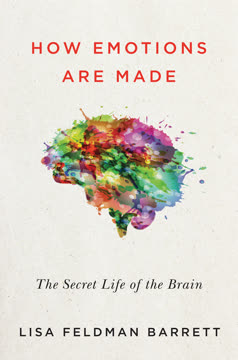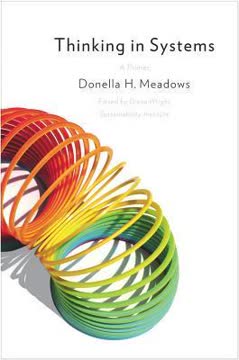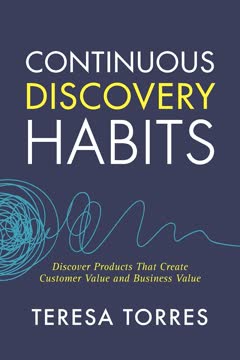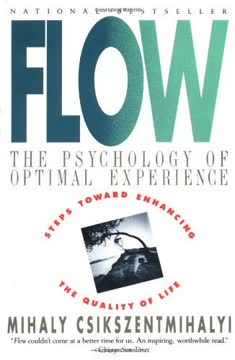نکات کلیدی
1. ادراک ما واقعیت ما را شکل میدهد: ما بر اساس مدلها عمل میکنیم، نه تجربهی مستقیم
ما به عنوان انسانها به طور مستقیم بر جهان عمل نمیکنیم. هر یک از ما نمایشی از جهانی که در آن زندگی میکنیم ایجاد میکنیم — یعنی نقشه یا مدلی میسازیم که از آن برای تولید رفتار خود استفاده میکنیم.
نقشهها در مقابل قلمرو. تجربهی ما از جهان از طریق نمایشهای داخلی یا مدلهای ما واسطه میشود. این مدلها از طریق سه فرآیند جهانی ایجاد میشوند: تعمیم، حذف و تحریف. در حالی که این فرآیندها برای پیمایش در پیچیدگی جهان ضروری هستند، میتوانند به محدودیتهایی در تفکر و رفتار ما منجر شوند.
پیامدها برای درمان. وقتی افراد با ابراز درد یا نارضایتی به درمان میآیند، محدودیتهایی که تجربه میکنند معمولاً در نمایشی از جهان است، نه در خود جهان. با درک و کار با این مدلهای داخلی، درمانگران میتوانند به مراجعان کمک کنند تا دیدگاهها و انتخابهای خود را گسترش دهند و به تجربیات و رفتارهای رضایتبخشتری دست یابند.
2. زبان سیستم نمایشی اصلی ما برای مدلسازی جهان است
زبان انسانی راهی برای نمایش جهان است.
ساختار زبانی بازتابی از تفکر است. زبان به عنوان یک سیستم نمایشی برای تجربیات ما و وسیلهای برای ارتباط آن نمایش عمل میکند. ساختارها و الگوهای زبان ما بینشی در مورد چگونگی سازماندهی و درک تجربیاتمان ارائه میدهند.
ارتباط درمانی. با بررسی الگوهای زبانی مراجع، درمانگران میتوانند بینشهای ارزشمندی در مدل جهان مراجع کسب کنند. این درک به درمانگران اجازه میدهد تا مناطقی را شناسایی کنند که مدل مراجع ممکن است گزینههای آنها را محدود کند یا باعث ناراحتی شود و به طور مؤثر مداخله کنند تا به مراجع کمک کنند مدل خود را گسترش دهند و به تغییرات مثبت دست یابند.
3. دستور زبان تحولی بینشهایی در مورد چگونگی ساختار زبان ارائه میدهد
دستور زبان تحولی مدلی صریح از فرآیند نمایش و ارتباط آن نمایش از جهان است.
شهود زبانی. دستور زبان تحولی درک شهودی ما از ساختار زبان، از جمله ساختارهای خوبساخته، ساختارهای مؤلفهای و روابط منطقی-معنایی را رسمی میکند. این مدل رسمی چارچوبی برای تحلیل چگونگی استخراج ساختارهای سطحی (آنچه میگوییم) از ساختارهای عمیق (نمایش کامل زبانی) فراهم میکند.
کاربرد درمانی. با تطبیق مفاهیم از دستور زبان تحولی، درمانگران میتوانند روشهای سیستماتیکی برای شناسایی و به چالش کشیدن الگوهای محدودکننده در زبان و تفکر مراجع توسعه دهند. این رویکرد امکان استراتژی مداخلهای دقیقتر و مؤثرتر در درمان را فراهم میکند.
4. مدل متا: چارچوبی برای درک و تغییر الگوهای زبانی
مدل متا که ما ارائه میدهیم یک مکتب جدید درمانی نیست، بلکه مجموعهای خاص از ابزارها/تکنیکها است که نمایشی صریح از آنچه به نوعی در هر شکل از درمان وجود دارد، میباشد.
جعبهابزار صریح. مدل متا به درمانگران مجموعهای از تکنیکهای خاص و قابل یادگیری برای شناسایی و به چالش کشیدن الگوهای محدودکننده در زبان مراجع ارائه میدهد. این تکنیکها بر اساس فرآیندهای زبانی جهانی هستند و میتوانند با رویکردهای درمانی مختلف ادغام شوند.
اجزای کلیدی:
- شناسایی حذفها در ساختارهای سطحی
- شناسایی و به چالش کشیدن تعمیمها
- پرداختن به نادرستی معنایی
- بازیابی پیشفرضها
با استفاده از این تکنیکها، درمانگران میتوانند به مراجعان کمک کنند اطلاعات حذفشده را بازیابی کنند، باورهای محدودکننده را به چالش بکشند و مدلهای خود از جهان را گسترش دهند.
5. خوبساختگی در درمان: اصول راهنما برای ارتباط مؤثر
اثر کلی این مدل متا از نظر خوبساختگی است. به عنوان گویشوران بومی، ما میتوانیم به طور مداوم بین گروههای کلماتی که خوبساخته هستند — یعنی جملات — و گروههای کلماتی که خوبساخته نیستند، تمایز قائل شویم.
معیارهای درمانی. مدل متا معیارهایی برای خوبساختگی در درمان تعیین میکند که فراتر از درستی دستوری است و شامل موارد زیر میشود:
- هیچ حذف چالشنشدهای در مناطقی که مراجع تجربهای از انتخاب ندارد
- هیچ نامگذاری (کلمات فرآیندی که به اسم تبدیل شدهاند)
- شاخصهای ارجاعی مشخص
- افعال کاملاً مشخص
- پیشفرضهای بررسیشده
- خوبساختگی معنایی
راهنمای مداخله. با اعمال این معیارها، درمانگران میتوانند به طور سیستماتیک مناطقی را شناسایی کنند که الگوهای زبانی مراجع ممکن است تجربه یا گزینههای آنها را محدود کند. این استراتژی روشنی برای مکان و چگونگی مداخله در فرآیند درمان فراهم میکند.
6. تکنیکهایی برای به چالش کشیدن و گسترش مدلهای مراجع از جهان
هدف از ذکر این واقعیت کاملاً واضح این نیست که شما، به عنوان یک درمانگر، از این که مردم احساساتی دارند آگاه نیستید، بلکه امید است که شما تشخیص دهید که وقتی سوالاتی مانند "در مورد آن چه احساسی دارید؟" میپرسید ... در واقع از مراجع خود برای نمایشی کاملتر (حتی از ساختار عمیق) از تجربه مراجع از جهان درخواست میکنید.
رویکرد چندوجهی. مدل متا تکنیکهای مختلفی برای به چالش کشیدن و گسترش مدل مراجع از جهان ارائه میدهد:
- بازیابی اطلاعات حذفشده
- به چالش کشیدن تعمیمها
- پرداختن به نادرستی معنایی
- بررسی پیشفرضها
- تغییر سیستمهای نمایشی
- استفاده از اجرا و خیال هدایتشده
- اجرای دوگانگیهای درمانی
ادغام با مهارتهای موجود. این تکنیکها برای تکمیل و تقویت مهارتها و رویکردهای موجود درمانگر طراحی شدهاند و راهی سیستماتیک برای شناسایی و پرداختن به الگوهای محدودکننده در زبان و تفکر مراجع فراهم میکنند.
7. ادغام مدل متا با رویکردهای مختلف رواندرمانی
اکنون میخواهیم به طور مختصر به سوال رابطه بین مدل متا و درمان خانواده بپردازیم. به طور ساده، استراتژی کلی مدل متا شناسایی، به چالش کشیدن و گسترش بخشهای فقیر و محدود مدل فرد از جهان است.
کاربرد جهانی. اصول مدل متا میتواند در انواع مختلفی از روشهای درمانی، از جمله درمان فردی، زوجی و خانوادگی اعمال شود. این مدل زبان و چارچوب مشترکی برای درک و پرداختن به الگوهای محدودکننده در ارتباط و تفکر فراهم میکند.
افزایش اثربخشی. با ادغام مدل متا با رویکردهای درمانی موجود، درمانگران میتوانند:
- به طور دقیقتری مناطق مداخله را شناسایی کنند
- به طور سیستماتیک باورها و الگوهای محدودکننده را به چالش بکشند
- به مراجعان کمک کنند مدلهای غنیتر و توانمندتری از جهان توسعه دهند
- ارتباط مؤثرتری در خانوادهها و روابط تسهیل کنند
مدل متا به این ترتیب به عنوان ابزاری قدرتمند برای افزایش اثربخشی رویکردهای مختلف رواندرمانی عمل میکند و راهی سیستماتیک برای درک و تحول الگوهای زبانی و شناختی که زیربنای تجربه و رفتار انسانی هستند، فراهم میکند.
آخرین بهروزرسانی::
FAQ
What's The Structure of Magic I about?
- Focus on Language and Therapy: The book explores how language can be a powerful tool in therapeutic practices, influencing perceptions and experiences.
- Modeling Human Experience: Richard Bandler and John Grinder introduce modeling, which involves creating representations of human experiences to facilitate understanding and change.
- Meta-Model Development: It presents a Meta-model derived from transformational grammar, providing a framework for therapists to enhance their effectiveness by understanding and manipulating language structures.
Why should I read The Structure of Magic I?
- Enhance Therapeutic Skills: The book offers practical tools and techniques for therapists to improve their effectiveness in helping clients.
- Learn Language Patterns: Readers gain insights into the structure of language and its influence on human behavior, applicable in various therapeutic contexts.
- Foundation for NLP: It lays the groundwork for Neuro-Linguistic Programming (NLP), offering a unique perspective on communication and change.
What are the key takeaways of The Structure of Magic I?
- Understanding Models: Individuals create models of the world based on their experiences, which can limit their perceptions and choices.
- Language as a Tool: Language is portrayed as a powerful tool in therapy, where understanding its structure can lead to more effective communication and change.
- Techniques for Recovery: The authors provide techniques for recovering missing pieces in a client's narrative, such as identifying deletions, distortions, and generalizations.
What is the Meta-model in The Structure of Magic I?
- Framework for Therapy: The Meta-model is a structured approach that helps therapists identify and challenge limitations in a client's language and thinking.
- Focus on Deletions: It emphasizes recognizing deletions in a client's speech, indicating missing information in their model of the world.
- Challenging Generalizations: The Meta-model involves questioning generalizations and assumptions, helping clients reconnect with their experiences and expand their choices.
How does The Structure of Magic I define "modeling"?
- Creating Representations: Modeling is the process of creating representations of experiences that guide behavior and perception.
- Active Process: It involves interpreting experiences and creating maps that influence actions and decisions.
- Therapeutic Application: In therapy, modeling allows therapists to understand clients' perspectives and facilitate change by altering these mental maps.
What are the three universals of human modeling discussed in The Structure of Magic I?
- Generalization: Applying specific experiences broadly, which can lead to limiting beliefs and behaviors.
- Deletion: Omitting certain details in a person's narrative, resulting in an incomplete understanding of their experiences.
- Distortion: Misinterpreting or misrepresenting experiences, leading to skewed perceptions and emotional responses.
How can therapists use the techniques from The Structure of Magic I?
- Identifying Language Patterns: Therapists can recognize specific language patterns indicating a client's underlying beliefs and experiences.
- Asking Targeted Questions: The book provides strategies for asking questions that help clients uncover missing information and clarify their thoughts.
- Facilitating Change: By applying Meta-model techniques, therapists guide clients toward a richer understanding of their experiences, enabling informed choices.
What is the significance of "deletion" in therapy according to The Structure of Magic I?
- Missing Information: Deletion highlights the absence of important details in a client's narrative, hindering their understanding of their situation.
- Recovery Techniques: Therapists are encouraged to ask specific questions to recover these missing pieces, facilitating a more complete representation of the client's experiences.
- Enhancing Choices: Addressing deletions helps clients expand their options and improve coping strategies.
What are some examples of "nominalizations" mentioned in The Structure of Magic I?
- Transforming Processes into Events: Nominalizations occur when verbs or processes are turned into nouns, obscuring the ongoing nature of experiences.
- Examples: Phrases like "my decision" or "my fear" are nominalizations that can be transformed back into their original process forms, such as "deciding" or "fearing."
- Therapeutic Implications: Recognizing and reversing nominalizations allows clients to reconnect with the dynamic aspects of their experiences, promoting change.
How does The Structure of Magic I address the concept of generalization?
- Definition of Generalization: It is described as applying specific experiences to broader categories, often leading to limiting beliefs.
- Challenging Generalizations: The authors emphasize identifying and challenging these generalizations in therapy to help clients expand their choices and experiences.
- Techniques for Exploration: The book provides techniques for therapists to address generalizations, such as asking for specific examples or alternative perspectives.
What is the significance of "mind-reading" in The Structure of Magic I?
- Definition of Mind-Reading: It refers to assuming one knows what others are thinking or feeling without direct communication, leading to misunderstandings.
- Therapeutic Implications: Mind-reading can impoverish a client's model by limiting their ability to express their own thoughts and feelings.
- Challenging Mind-Reading: Therapists are encouraged to ask clients how they know what others are thinking or feeling, helping them clarify assumptions and improve communication.
What are the best quotes from The Structure of Magic I and what do they mean?
- "We do not operate directly on the world.": Emphasizes that individuals create mental models of their experiences, influencing perceptions and actions.
- "The magic of these therapeutic wizards also has structure.": Highlights that effective therapy is not just intuitive but can be understood and learned through structured techniques.
- "Language is a map, not the territory.": Underscores the importance of language in shaping our understanding of experiences and the potential for change through linguistic manipulation.
نقد و بررسی
کتاب ساختار جادو I به دلیل بینشهایش در زمینهی زبان، روانشناسی و تکنیکهای درمانی، عمدتاً نقدهای مثبتی دریافت میکند. خوانندگان از بررسی چگونگی ساخت واقعیت توسط افراد از طریق زبان و کاربردهای عملی آن برای درمانگران تمجید میکنند. بسیاری آن را روشنگر اما چالشبرانگیز برای خواندن میدانند. منتقدان به لحن آکادمیک آن اشاره کرده و پایههای علمی آن را مورد سوال قرار میدهند. این کتاب به عنوان پایهای برای برنامهریزی عصبی-زبانی (NLP) شناخته میشود، اگرچه برخی نسبت به توسعههای بعدی NLP ابراز تردید میکنند. به طور کلی، این کتاب برای درمانگران و کسانی که به درک رفتار و ارتباطات انسانی علاقهمندند، ارزشمند تلقی میشود.
Similar Books























